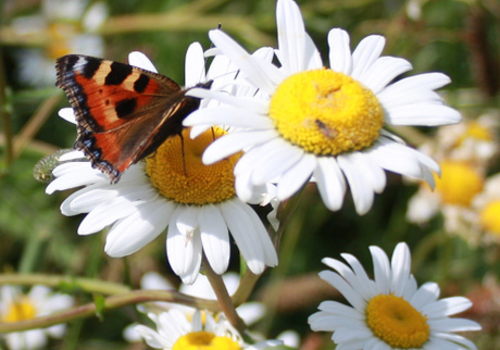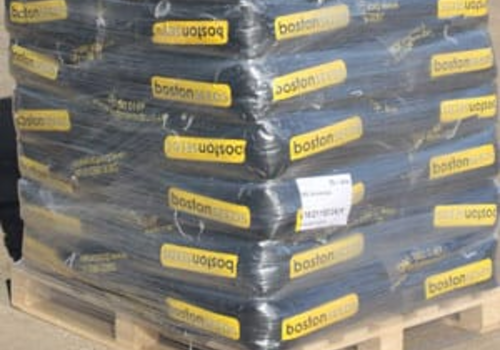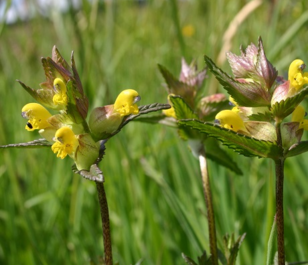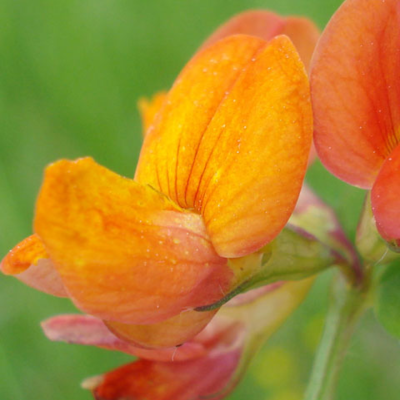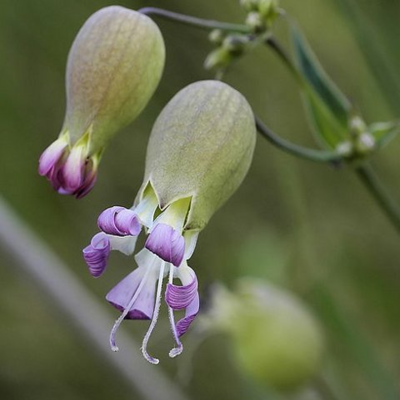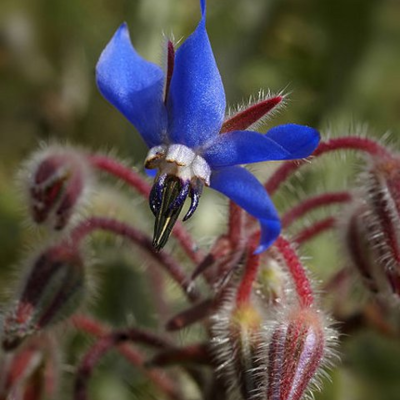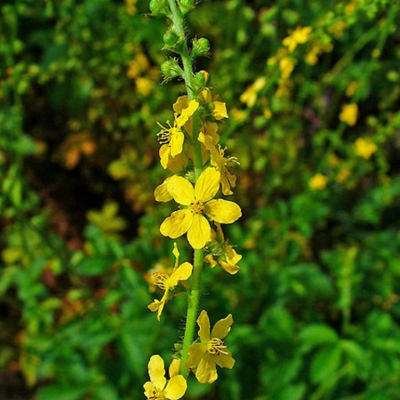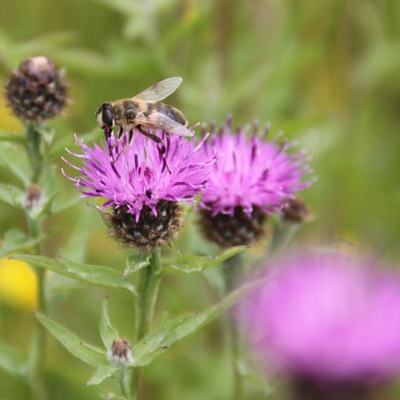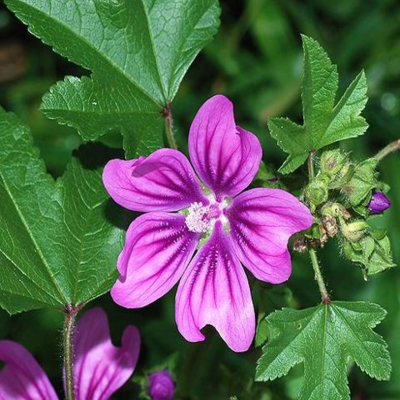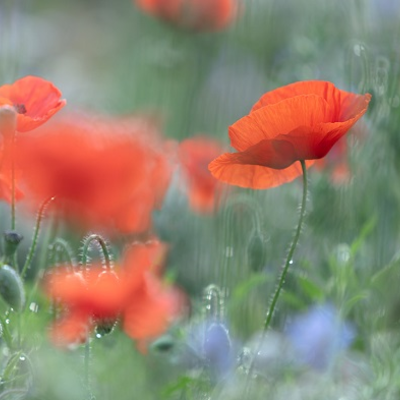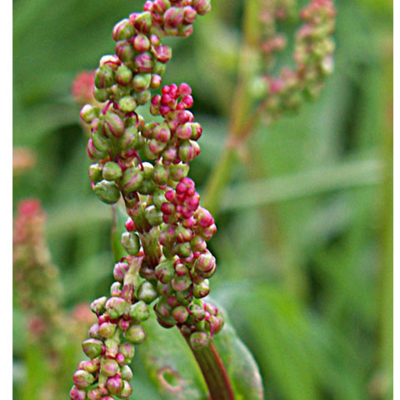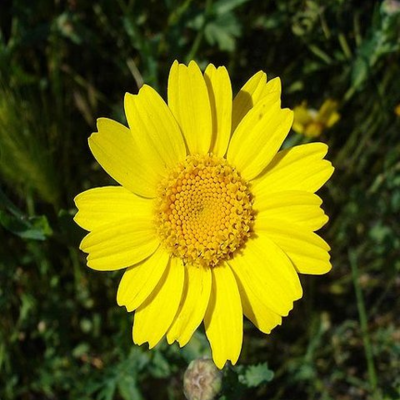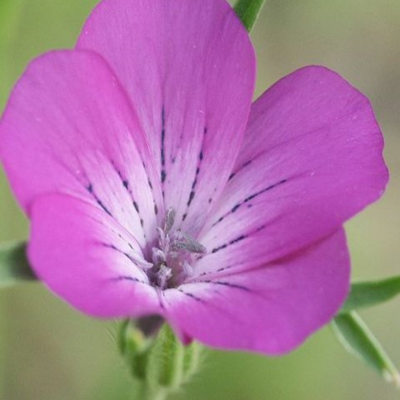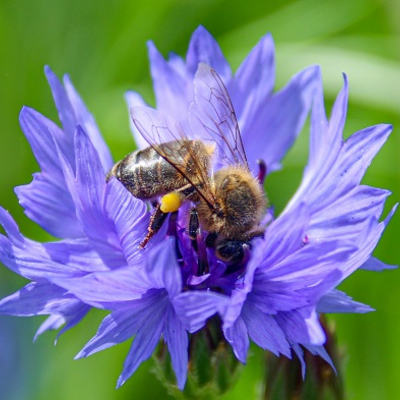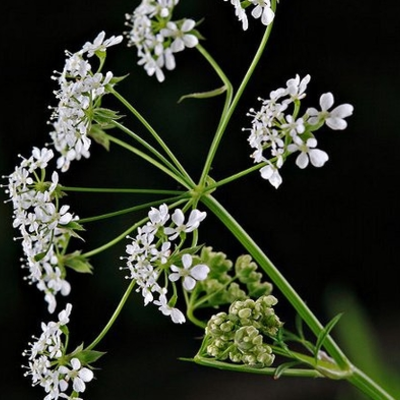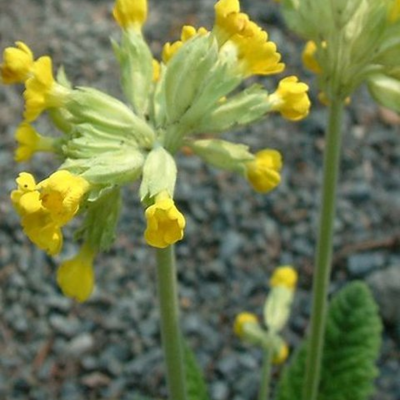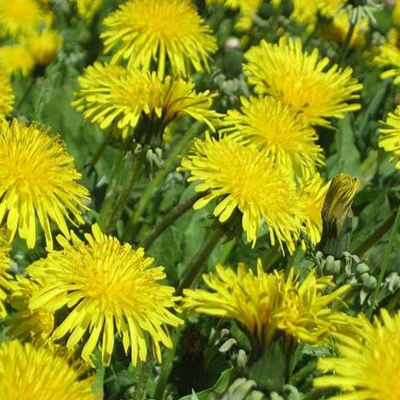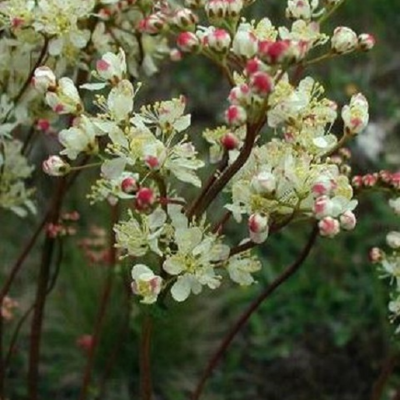Wildflower Seeds A to Z
From Agrimony right the way though to Yellow-rattle, there's a whole host of wildflower seeds you can choose from if a particular look is what you're going for. Each type of wildflower has its own unique set of qualities. Whether you're keen to create a meadow full of sunkissed golden wildflowers with healing properties like that of St John's-wort or you want a wildflower garden that looks pretty in pink when dressed in Greater Knapweed or Purple Loosestrife - we've got you covered.
Don't hesitate to get in touch to speak to one of our experts or request a catalogue to view our full range. Ordering regularly or looking for large volumes? Click here to apply for a trade account today - we review all applications within one working day.

Plants for Pollinators highlights plants selected by the RHS as scientifically proven to tackle the declines in bees, butterflies and other pollinators.
Harvest 2025 Seed Now In Stock For Next Day Delivery.
Exceptional quality yellow rattle seeds produced from UK meadow collections, freshly harvested in 2025. Cleaned to exacting standards of purity and germination to ensure we only supply the highest quality seeds. Order online today for next day delivery.
Yellow rattle is an important addition to any wildflower meadow, slowing down the rate of grass growth to create more space and opportunity for a diverse range of wildflower species. Commonly found across natural grassland meadows throughout the UK.
- Type: Annual
- Height: 20–50cm
- Flowers: May-September
- Best Sown: Autumn
- Soil Requirement: Well-drained, moist
- Light Requirement: Full sun
- Natural Habitat: Grassland, meadows
- Also known as: Corn Rattle, Hay Rattle, Penny Grass
- Seeds per gram: 270
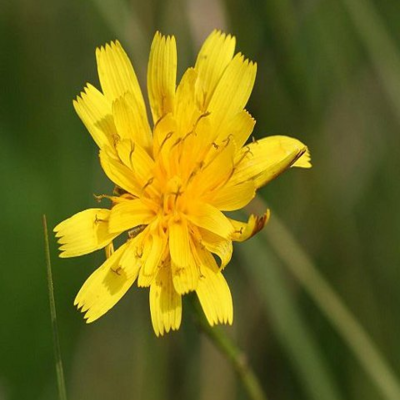

Plants for Pollinators highlights plants selected by the RHS as scientifically proven to tackle the declines in bees, butterflies and other pollinators.
For those with wildflower gardens, the dandelion-like, bright bursting yellow rosettes of the Autumn Hawkbit are a good way to bring in some extra sunshine. A long-lived and hardy wetland plant beloved by bees, and its seeds are also attractive to finches!
- Type: Perennial
- Height: 15-50cm
- Flowers: July-September
- Best Sown: Autumn or Spring
- Soil Requirement: Moist
- Light Requirement: Full sun and partial shade
- Natural Habitat: Grasslands, rocky ridges, pathways.
- Also known as: Fall Dandelion
- Seeds per gram: 1000
This item is currently unavailable
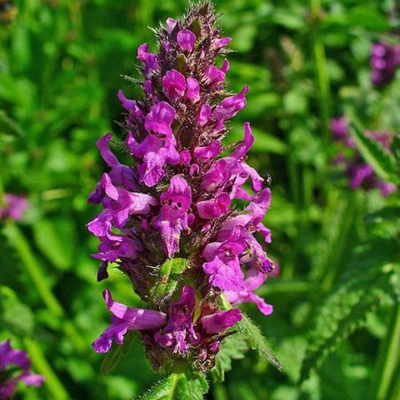

Plants for Pollinators highlights plants selected by the RHS as scientifically proven to tackle the declines in bees, butterflies and other pollinators.
A gorgeous addition to a wildflower garden, bearing spikes of rich purple and red petals, alongside distinct and attractive foliage. Its flowers are also known to attract bees and butterflies and they used to be planted in churchyards for spiritual protection. They grow well in any light, with an affinity for damp soil.
- Type: Perennial
- Height: 30-60cm.
- Flowers: June-August
- Best Sown: Autumn
- Soil Requirement: Moist but well-drained
- Light Requirement: Full sun or partial shade
- Natural Habitat: Grassy meadows, river banks
- Also known as: Bishops’s Wort, Wood Betony, Common Hedgenettle
- Seeds per gram: 600

Plants for Pollinators highlights plants selected by the RHS as scientifically proven to tackle the declines in bees, butterflies and other pollinators.
A Perennial Plant that is also commonly known as 'Eggs and Bacon' or 'Butter and Bacon'. The names that are commonly used for this plant come from the clusters of orange yolk-like flowers and buds which also have a pea-like appearance. The leaves have 5 narrow oval-shaped leaflets.
- Type: Perennial
- Height: 15-25cm
- Flowers: May-October.
- Best Sown: Autumn or Spring
- Soil Requirement: Well-drained
- Light Requirement: Full sun
- Natural Habitat: Grasslands, roadside verges, heathlands
- Also known as: Butter and Eggs, Eggs and Bacon, Hen and Chickens
- Seeds per gram: 600

Plants for Pollinators highlights plants selected by the RHS as scientifically proven to tackle the declines in bees, butterflies and other pollinators.
A Perennial Wildflower that is ordinarily found growing in meadows, grasslands and fields. An unusual plant with white, slightly drooping flowers above a purplish veined bladder. The leaves are a bluish-green in colour and have a long, thin appearance on mature plants. This wildflower has a similair aroma to cloves. A nectar plant for butterflies.
- Type: Perennial
- Height: 20-40cm
- Flowers: June-August.
- Best Sown: Autumn or Spring
- Soil Requirement: Well-drained
- Light Requirement: Full sun
- Natural Habitat: Meadows, grasslands, hedgerows, roadside verges
- Also known as: Maidens Tears, Cowbell, Common Bladder Catchfly
- Seeds per gram: 1200
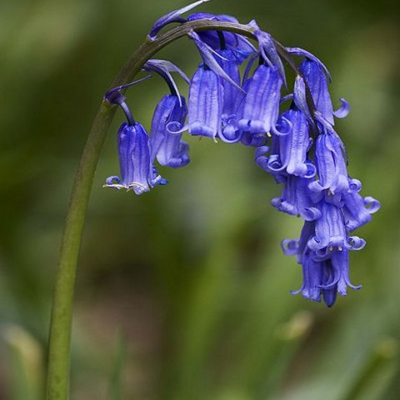

Plants for Pollinators highlights plants selected by the RHS as scientifically proven to tackle the declines in bees, butterflies and other pollinators.
A favourite spring flower that favours shade and dampness and creates a haze of violet-blue flowers commonly found in woodlands and hedgerows. Bluebells will take a number of years to flower from seed, but once in flower, will multiply over time, and give off a beautifully sweet scent.
- Type: Perennial
- Height: 3-40cm
- Flowers: April-June
- Best Sown: Autumn
- Soil Requirement: Well-drained, moist
- Light Requirement: Partial shade
- Natural Habitat: Woodland, hedgerows
- Also known as: English Bluebell, British Bluebell
- Seeds per gram: 200
Once prized for a range of culinary uses, the Borage herb has a unique palette among wild flowers which is sure to spice up your garden. Its brilliant blue, star-shaped flowers and hairy, scarlet stems are attractive to pollinators and easy to grow with minimal fuss.
- Type: Annual
- Height: 30-60cm
- Flowers: June-September
- Best Sown: Spring
- Soil Requirement: Well-drained
- Light Requirement: Full sun and partial shade
- Natural Habitat: Forest verges, meadows
- Also known as: Starflower Cool Tankard, Tailwort
- Seeds per gram: 100

Plants for Pollinators highlights plants selected by the RHS as scientifically proven to tackle the declines in bees, butterflies and other pollinators.
Common Agrimony is an attractive, medium-height meadow plant. Its yellow flowers on tall spires are ideally placed for bees and a number of species of wild birds. Steeped in British folklore, legend has it that placing a common agrimony flower under one's head will cause them to sleep until it is taken away.
- Type: Perennial
- Height: 40-80cm
- Flowers: June-September
- Best Sown: Autumn
- Soil Requirement: Well-drained, neutral
- Light Requirement: Full sun or partial shade
- Natural Habitat: Southern UK, grassland, meadows, roadsides
- Also known as: Church Steeples, Sticklewort, Aaron's Rod, Clot-Bur, Fairy's Wand, Money-In-Both-Pockets, Salt-And-Pepper, Sweethearts
- Seeds per gram: 60
This item is currently unavailable
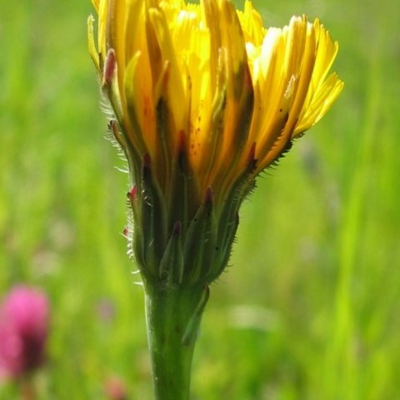

Plants for Pollinators highlights plants selected by the RHS as scientifically proven to tackle the declines in bees, butterflies and other pollinators.
These sunny yellow blooms grow on branched stems and have minimal leaves on the stem. The leaves are seen to have a pimple-like hairy appearance. This wildflower is easy to take care of, and are beloved by pollinators as well. This perennial wildflower is a member of the Daisy family and usually has 2-3 flowers on a branched stem. An excellent meadow flower.
- Type: Perennial
- Height: 30-45cm
- Flowers: May-September
- Best Sown: Autumn
- Soil Requirement: Well-drained
- Light Requirement: Full sun or part shade
- Natural Habitat: Roadsides, grasslands
- Also known as: Flatweed, False Dandelion
- Seeds per gram: 1250
This item is currently unavailable

Plants for Pollinators highlights plants selected by the RHS as scientifically proven to tackle the declines in bees, butterflies and other pollinators.
Produces a deep maroon flower head crowned with thistle-like florets of pink and purple, with dashes of a deep reddish-black. Don’t let its prickly appearance fool you- it’s an exceptionally hardy plant, but it has a softer side as a favourite of butterflies and bees!
- Type: Perennial
- Height: 30-60cm
- Flowers: June-September
- Best Sown: Autumn or Spring
- Soil Requirement: Well-drained
- Light Requirement: Full sun and partial shade
- Natural Habitat: Grasslands, forest verges
- Also known as: Bell Weed, Hardhead, Tassel
- Seeds per gram: 500
The mallow is a hearty plant in every sense of the word: it’s able to adapt to a variety of soils and seasons, and bears awfully lovey-dovey heart-shaped pink petals with darker veins. It’s also been prized for its numerous culinary and medicinal uses.
- Type: Annual or Biennial
- Height: 30-90cm
- Flowers: June-September
- Best Sown: Spring
- Soil Requirement: Well-drained, moist
- Light Requirement: Full sun
- Natural Habitat: Meadows, road verges
- Also known as: Cheese Cakes, Marsh Mallow, Round Dock
- Seeds per gram: 150

Plants for Pollinators highlights plants selected by the RHS as scientifically proven to tackle the declines in bees, butterflies and other pollinators.
The wild red poppy is seen in fields across the UK. One of our most popular wildflowers. Synonymous with the 1914-18 Great War. Ideally requires a frost or chilling to help germination.
- Type: Annual
- Height: 30-60cm
- Flowers: May-July
- Best Sown: Spring
- Soil Requirement: Well-drained
- Light Requirement: Full sun
- Natural Habitat: Grassland, meadow, road verges
- Also known as: Corn Poppy, Corn Rose, Field Poppy, Flanders Poppy
- Seeds per gram: 11000
A wildflower with a lot of flavour! Spice up the garden with slender spires of small, scarlet blooms, which sometimes grow in a sweeter pink colour. It also bears attractive, oval leaves that taste tart when eaten. Self-seeds freely, so take care while you pepper them around.
- Type: Perennial
- Height: 15-60cm
- Flowers: May-August
- Best Sown: Spring
- Soil Requirement: Well-drained
- Light Requirement: Full sun
- Natural Habitat: Grasslands, woodlands, verges
- Also known as: Sour Ducks, Vinegar Plant
- Seeds per gram: 2000
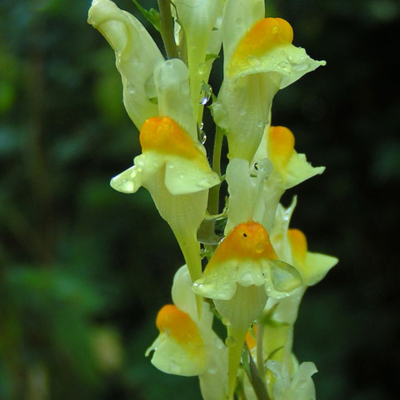

Plants for Pollinators highlights plants selected by the RHS as scientifically proven to tackle the declines in bees, butterflies and other pollinators.
Perennial. Hedgerows and meadows with yellow/orange snap-dragon flowers.
- Flowers: June - October
- Requires: Sun/light shade.
- Height: 30-60cm
This item is currently unavailable


Plants for Pollinators highlights plants selected by the RHS as scientifically proven to tackle the declines in bees, butterflies and other pollinators.
A creeping perennial wildflower with Large, white daisy-like flowers. They’re easy enough to grow along with the benefit of being attractive to pollinating species, and will reward you with a strong aroma similar to apples.
- Type: Annual
- Height: 20-30cm
- Flowers: May-July
- Best Sown: Autumn
- Soil Requirement: Well-drained
- Light Requirement: Full sun
- Natural Habitat: Grasslands
- Also known as: Mayweed, Field Chamomile
- Seeds per gram: 5000

Plants for Pollinators highlights plants selected by the RHS as scientifically proven to tackle the declines in bees, butterflies and other pollinators.
An exceptionally hardy wildflower which produces golden, daisy-like blooms about 5cm in diameter. It’s also ideal for attracting bees and butterflies, and has been noted to have a pleasant scent.
- Type: Annual
- Height: 15-45cm
- Flowers: June-October
- Best Sown: Spring
- Soil Requirement: Well-drained
- Light Requirement: Full sun
- Natural Habitat: Hedgerows, meadows
- Also known as: Guild Weed, Yellow Daisy, Yellow Ox-Eye
- Seeds per gram: 750

Plants for Pollinators highlights plants selected by the RHS as scientifically proven to tackle the declines in bees, butterflies and other pollinators.
The corncockle’s beauty is almost artistic: magenta petals fading to white, laced with veins of deep purple. Grows tall and proud on soft, silvery stems. What’s not to love?
- Type: Annual
- Height: 60-120cm
- Flowers: June-August
- Best Sown: Spring
- Soil Requirement: Well-drained, sandy
- Light Requirement: Full sun
- Natural Habitat: Grasslands, roadsides
- Also known as: Cat’s Eyes, Kiss-Me-Quick
- Seeds per gram: 80

Plants for Pollinators highlights plants selected by the RHS as scientifically proven to tackle the declines in bees, butterflies and other pollinators.
Famed for its unique and beautiful colour, with perfect pale blue petals tinted with purple in a fluffy formation. This wildflower lends itself to many colour combinations and is highly attractive to pollinators.
- Type: Annual
- Height: 30-60cm
- Flowers: June-August
- Best Sown: Autumn or Spring
- Soil Requirement: Well-drained
- Light Requirement: Full sun
- Natural Habitat: Grasslands, farmland
- Also known as: Bachelor’s Button
- Seeds per gram: 200
A perennial wildflower that grows rapidly during the summer months. Cow Parsley has a hollow stem and grows to be very tall. White umbrella-like flowers that look like lace. Usually found in large clusters on roadside verges, hedgerows and woodland areas.
- Type: Perennial
- Height: 60-90cm
- Flowers: April-June
- Best Sown: Autumn or Spring
- Soil Requirement: Well-drained
- Light Requirement: Partial shade
- Natural Habitat: Hedgerows and woodland edges
- Also known as: Queen Anne's Lace, Lady's Lace
- Seeds per gram: 200

Plants for Pollinators highlights plants selected by the RHS as scientifically proven to tackle the declines in bees, butterflies and other pollinators.
A perennial wildflower with an aromatic presence. Cowslip displays a rosette of green, tongue-like leaves upon a green stem. The flowers are deep yellow with orange markings in the center, similar to an egg yolk.
- Type: Perennial
- Height: 10-30cm
- Flowers: April-May
- Best Sown: Autumn or Spring
- Soil Requirement: Well-drained
- Light Requirement: Full sun and partial shade
- Natural Habitat: Meadows, grassland, woodland edges, verges
- Also known as Cowslip Primrose, Oxlip
- Seeds per gram: 1100
This item is currently unavailable

Plants for Pollinators highlights plants selected by the RHS as scientifically proven to tackle the declines in bees, butterflies and other pollinators.
One shouldn’t overlook the beaming yellow florets of the dandelion! Some treasure dandelions as a vitamin-rich food source, and they’re a hardy, easy-to-grow flower that’s sure to attract pollinators and bring an extra splash of sunshine to your garden. They’re named from the French word “dent-de-leon,” or “lion’s tooth,” referring to their deeply serrated leaves.
- Type: Perennial
- Height: 10-45cm
- Flowers: April-May
- Best Sown: Autumn or Spring
- Soil Requirement: Well-drained
- Light Requirement: Full sun and partial shade
- Natural Habitat: Meadows, road verges, fields
- Also known as: Bitterwort, Clock Flower, Lion’s Tooth
- Seeds per gram: 8000
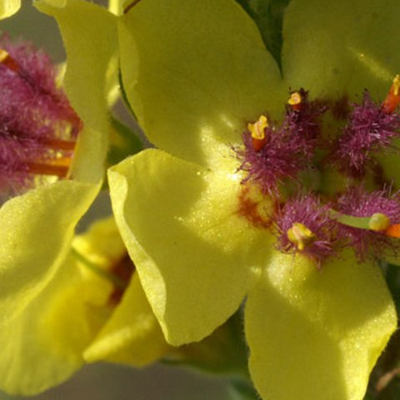

Plants for Pollinators highlights plants selected by the RHS as scientifically proven to tackle the declines in bees, butterflies and other pollinators.
The dark mullein is a flower with a lot of layers to its beauty, producing spikes of buttery yellow, five-petalled flowers that are rather cheery, but crowned with sophisticated wine-red stamens, all of it wreathed in hairy green foliage. A plant with a peculiar palette that’s sure to be striking in any arrangement.
- Type: Perennial
- Height: 15-45cm
- Flowers: June-September
- Best Sown: Autumn or Spring
- Soil Requirement: Well-drained
- Light Requirement: Full sun
- Natural Habitat: Road verges, hedgerows
- Also known as: Black-Rooted Mullein, Tall Mullein
- Seeds per gram: 11000
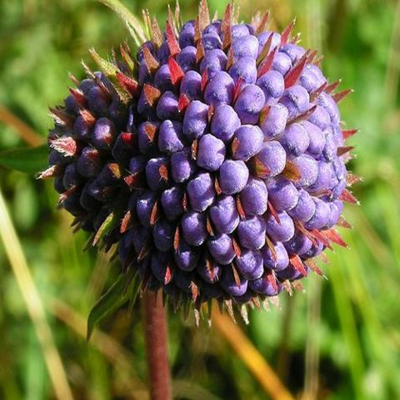

Plants for Pollinators highlights plants selected by the RHS as scientifically proven to tackle the declines in bees, butterflies and other pollinators.
Though its pincushion-like, protruding anthers amidst indigo petals seem a little strange, we promise there’s nothing diabolical about the devil’s-bit scabious. In fact, its name comes from its shallow roots, which according to folklore were bitten short out of jealousy for the flower’s beauty… and, being pollen-rich and beloved by bees, it’s safe to say this flower is actually a devilishly good addition to a garden!
- Type: Perennial
- Height: 50-80cm
- Flowers: June-September
- Best Sown: Autumn
- Soil Requirement: Well-drained, moist
- Light Requirement: Full sun and partial shade
- Natural Habitat: Bogs, woodland, heathlands
- Also known as: Blue Bonnets, Bobby Bright Buttons, Fore-Bit
- Seeds per gram: 600

Plants for Pollinators highlights plants selected by the RHS as scientifically proven to tackle the declines in bees, butterflies and other pollinators.
The Dropwort produces long, thin branches of delicate pink buds and foamy cream flowers and thin, fern-like leaves. Everything about this plant appears as soft and sweet as its common nickname, ‘Meadowsweet’, and it has a strong scent to match. Plant it alone or with pastel-petalled company in heavier, loamy soil for a supremely sugary spectacle.
- Type: Perennial
- Height: 60-90cm
- Flowers: May-August
- Best Sown: Autumn or Spring
- Soil Requirement: Well-drained, moist
- Light Requirement: Full sun and partial shade
- Natural Habitat: Woodland verges, roadside verges, damp meadows
- Also known as: Lady’s Belt, Little Queen, Meadowsweet
- Seeds per gram: 850
Maybe you're looking for something a little more unusual that's a firm favourite with the bees, in which case an ocean blue garden of Borage is what you need. Or what about the Devil's-bit Scabious? A funky looking plant that isn't half as hellish as it sounds.
All of the wildflower seeds we supply here at Boston Seeds are UK native and many of which are certified as Plants for Pollinators by the Royal Horticultural Society. So, not only will you have the most amazing wildflower garden, you'll being seriously doing your bit for the environment, too.
To learn more about each of the plant varieties we supply, check out our Guide to Wildflower Species here.
Choosing the Right Quantity of Wildflower Seed
Whether you're just looking for wildflower seed for a small patch or land or looking for large quantities for landscape projects we have a wide range of sizes. At Boston seeds you can buy our wildflower seed in multiple sizes including 50g, 100g, 250g, 1kg and 5kg.
Have a question about a particular wildflower? Check out our wildflower seed advice pages for more info.
Buy With Confidence

